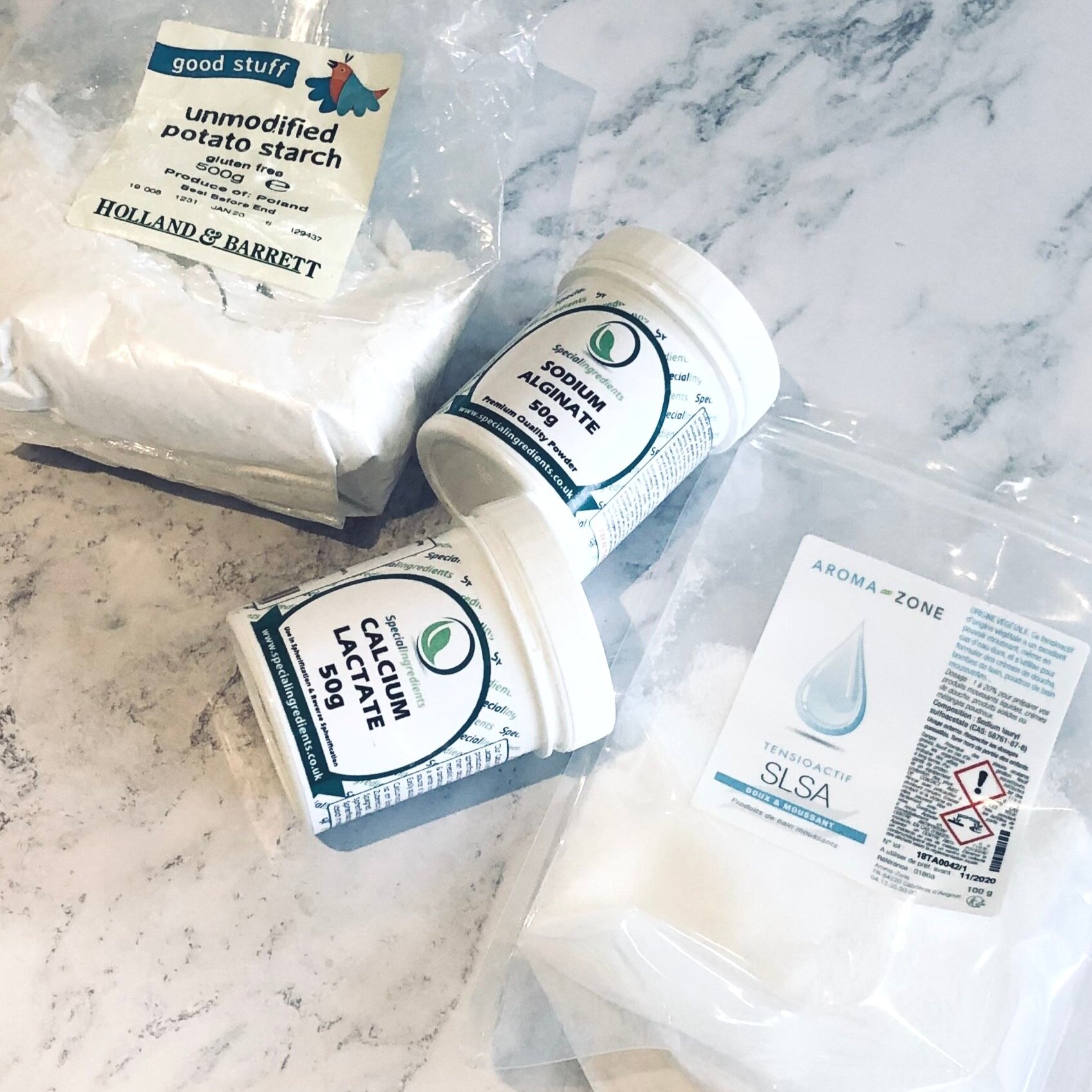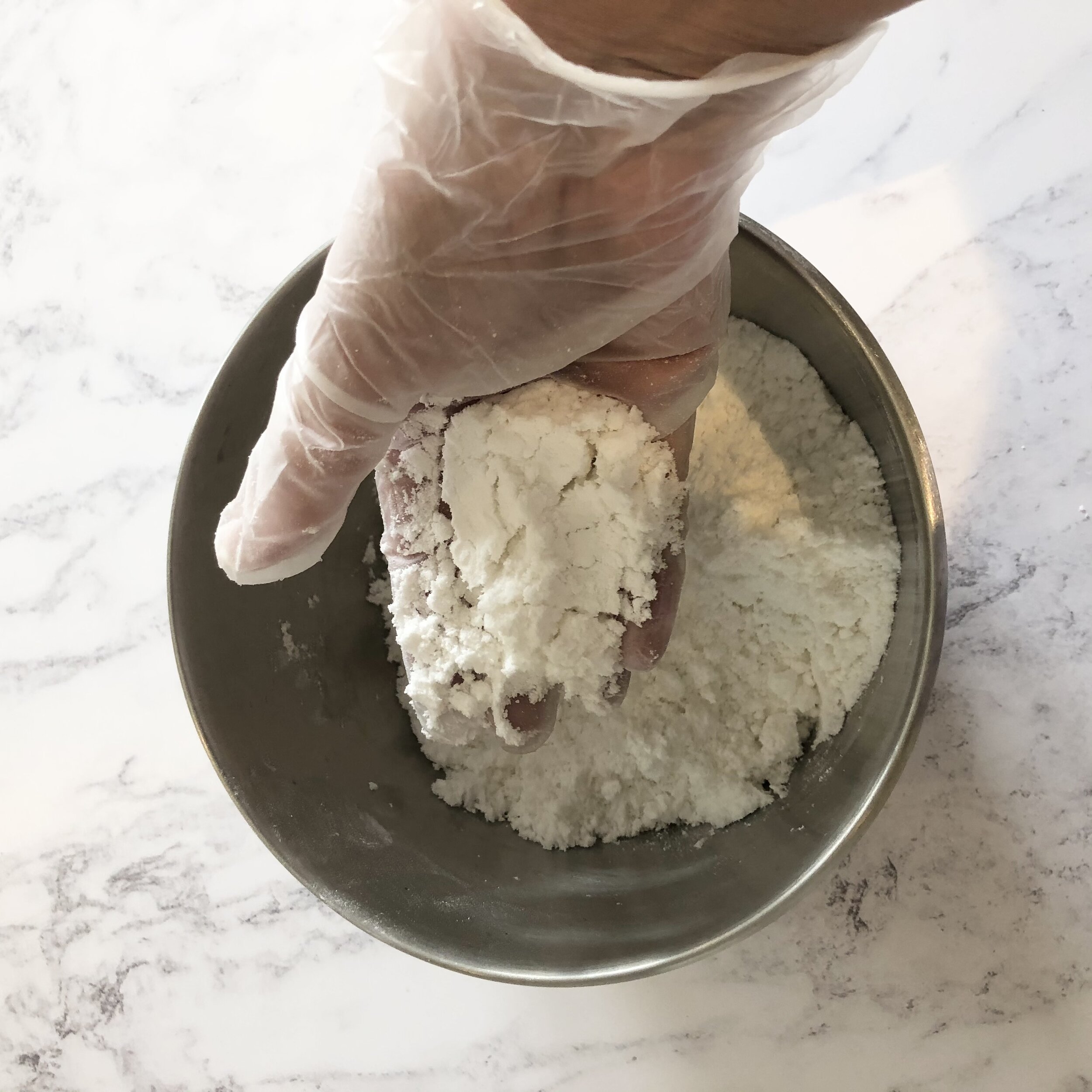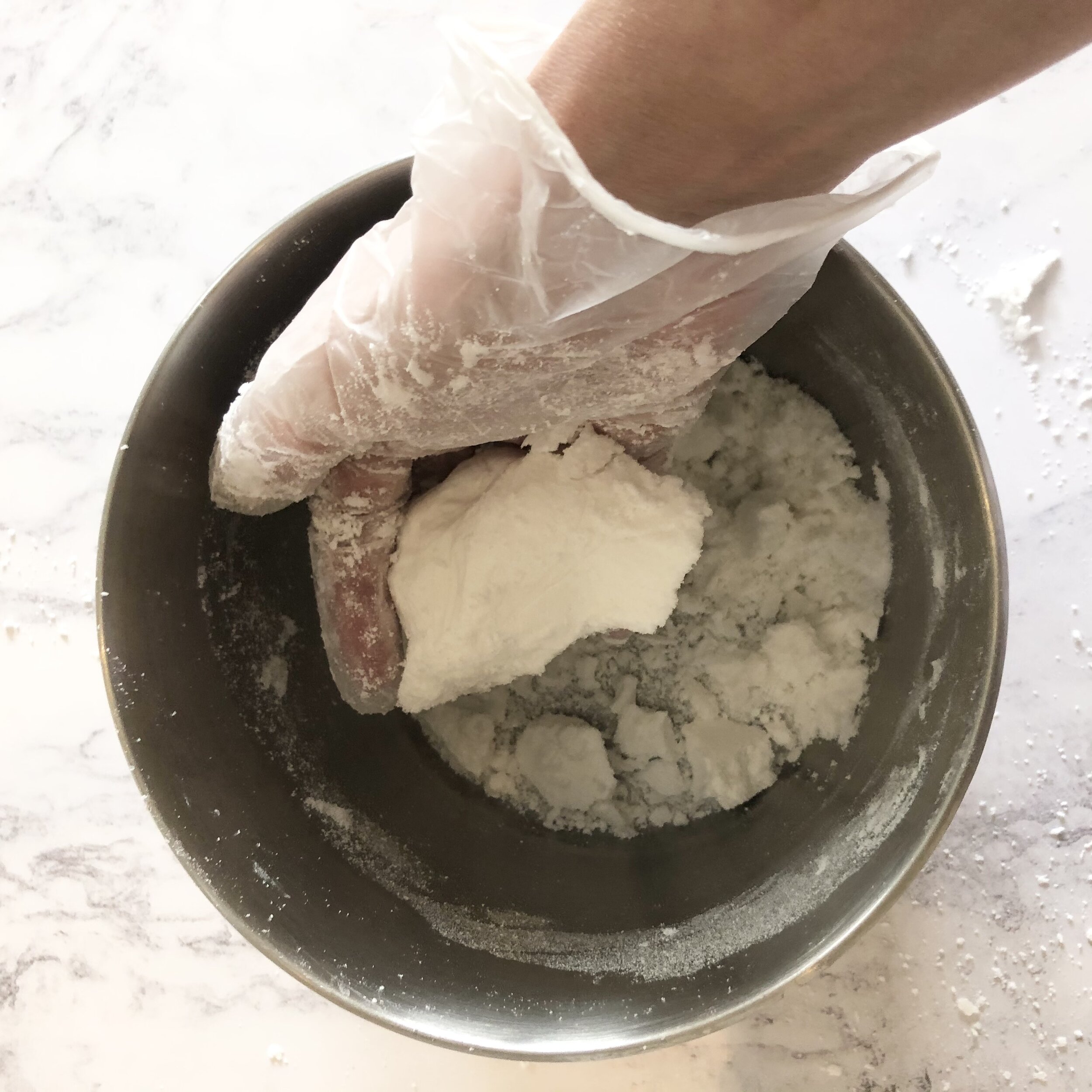How to Make a Shower Bomb
If you are not familiar with shower bombs, these can only be described as a hybrid between a synthetic detergent (soap) bar and a bath bomb; it is a combination of citric acid, sodium bicarbonate to create a fizz in a base of starches, a gel, and a surfactant to help you wash. They are fun and interesting to use, as they will fizz like a bathbomb but will keep shape while in use. They are a one use product however, I managed to use my sample from Lush several times to assess it’s properties.
A shower bomb is essentially a poorly made bath bomb, in that it doesn’t all react instantly in the presence of water, but will foam and fizz just enough for that 'bomb-type' sensation, while still holding its shape to allow you to wash with it. The level of reaction you see in the shower bomb is due to it being very tightly packed as well as the levels of reactants (sodium bicarbonate/citric acid) in relation to the starches and gellants.
If you have ever made bath bombs you will know that you need a firm but loose structure when molding. It can not be too compact otherwise when it comes to being used, it will sink to the bottom of the bath tub and not fizz as readily. Any bath-bomb expert will tell you it is a sensitive balance; too much water and it will start to react during manufacturing, too little, will not hold it’s shape, and fall apart.
However, with the shower bomb, we want the reaction to be visible but less 'reactive' and we want there to also be a synergy between the sodium alginate and calcium lactate to create a gel that allows it to hold its structure in your hand. Using these two ingredients strengthens the gel and also creates a shower cream-gel type texture when in use.
Considerations when Making the Shower Bomb
Notice that when mixing the powders I separated it into two stages. If you mix the Sodium bicarb and acids together, there is a risk of clumping before you add to the other ingredients. You want to ensure all other powders are mixed together so that you can disperse the reactants in there quickly. Both citric acid and sodium bicarb are hygroscopic, they will attract water from the air, causing the powder to cake. This needs to be avoided, but sometimes it is not possible. I tend to mix my acids and bases together quickly and disperse into the other powders without delay to avoid this happening. Try not to make your bombs when its raining or when you know the ambient humidity is very high. Don’t worry too much if your mix starts to clump. as long as it is still soft you can mix it in with the other powders, I find using my (gloved) hands to do this is best with smaller batches. If you are considering making these or bath bombs for sale you may consider purchasing an air de-humidifier.
I used citric acid granules because those were to hand. I wanted a fairly smooth consistency so whizzed it up in a coffee grinder briefly (10-20 seconds) with the sodium bicarb and tartaric acid before adding to the other ingredients. You can try with powdered citric acid if you have some, but be aware this may mean the formulation needs adjusting, in terms of quantity and process.
If you are familiar with molecular gastronomy you will know why I used sodium alginate and calcium lactate. It is used to create gels and commonly used in spherification and reverse spherification, a concept I find fascinating and a concept I will be working on in the near future!. Lets take a closer look at this interesting polysaccaride.
Sodium Alginate
Sodium alginate, the sodium salt of alginic acid, is extracted from brown seaweed (Phaeophyta). It is the main form of alginates that functions as a thickener, stabilizer and gelling agent. This ingredient is commonly used to produce heat-stable gels and to give viscosity in food. It has the same function in this shower bomb. Generally, sodium alginates viscosity is dependent on:
Degree of polymerization
The molecular weight of the sodium alginate polymer
Temperature - gel is effected by heat/cold
Concentration - the more used the thicker the gel
Presence of polyvalent metal cations - affects gel strength and heat stability
pH - affects the degree of cross-linking
Sodium alginate is soluble in both cold and hot water to produce a smooth viscous solution. When calcium ions are added to a sodium alginate solution, they react instantly with the alginate to form a gel. In presence of calcium, it will form a gel without the need for heat. Also, without the use of calcium, sodium alginate gels tends not to be heat stable i.e the thickening properties tend to lose viscosity over time.
It would probably be important to note that I live in a very hard water area, which means there is typically a lot of calcium in the water. This will obviously have an effect on how strong the gels in my shower bombs turn out. If you live in a soft water area you may need to increase the level of calcium lactate in this case.
Formula for Rosemary + Lemon Shower Bomb
Method
Mix phase A. You can mix briefly in a coffee grinder, but this is not essential.
Mix phase B and grind in a coffee grinder for 10-20 seconds.
Quickly add phase B to phase A and combine well.
Premix essential oils and add to phase A/B and use gloved hands to mix quickly.
Mix water and surfactant (cocamidopropyl betaine) and add to mixture
Use hands to make sure it is mixed well. Add more water if necessary.
Press mixture FIRMLY into a mold or moonpress (see image). I also pressed it firmly onto a hard surface before releasing it from the press. It needs to be tightly packed.
Leave to dry for 12-48 hours.
Tips
Be aware that drying times can vary depending on humidity and how much water you used. Slight changes in the format of the powders used may impact how readily the wet ingredients are taken up by the powders. If you want to add colour, why not try some beetroot or hibiscus powder for a red or deep pink/purple. I would start with about 3-5%. Adjust the other ingredients evenly to make up the formula 100%. If you find it too crumbly, add more water to the mix to allow it to stick together more firmly.
How to Use
Hop in the shower. Take your shower bomb and let it get wet. It will instantly fizz and foam. Wash with it.
Disclaimer
I have made these a few times, the first was a few weeks ago therefore I can not guarantee how stable they are.I will keep monitoring. Please be aware that I used culinary sodium alginate and calcium lactate. Any change in brand of ingredients or form they come in could result in a change in consistency or performance and may require some adjustment. Let me know how you get on with your ingredients.
Shower bomb being used.






